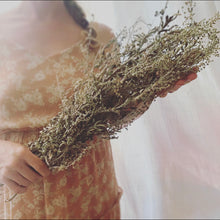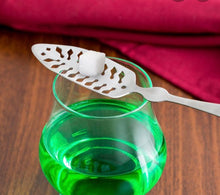This absinthe from moonshine recipe is adapted from the old 1855 French recipe. This drink’s flavor and smell surpass any cheap store absinthe made from synthetic additives and dyes.
Preparing Raw Materials. Herbs and seeds can be purchased at a drugstore (at some street markets, too) or prepared at home. The only disadvantage of drugstore-bought wormwood is that it has large leaves and stalks. To make absinthe you need small top leaves and flower heads.
You should harvest wormwood in late July or early August during blooming period from 10:00 to 11:00 AM when its leaves are at the peak of their aroma and have the max amount of essential oils. You’ll have to cut the first 15-25 cm from the top and dry these leaves in an attic with good ventilation, laying them down a thin layer. After the leaves are fully dried they are ready to use. Now you only need to separate the leaves and flower heads from the stalks.
Clarified moonshine (preferably grain, but sugar or fruit moonshines are okay, too) can be used as the alcohol base. Alcohol base should be at least 80% ABV, but you can use less strong moonshine (at least 40%) by increasing the maturing period in the first stage to 30 days and adding less water during distillation. Aside from moonshine, you can also use store-bought vodka or pure ethanol. There is no fundamental difference.
Ingredients:
- Moonshine (80-85%) – 1 liter
- Bitter wormwood (dried) – 100 gr
- Anise Seeds – 50 gr
- Fennel seeds – 50 gr
- Lemon balm – 5 gr (for shade)
- Hyssop – 10 gr (for shade)
Right after distillation, your absinthe is going to be clear or have a yellow tint. In order to make it green you’ll have to infuse half of the product with lemon balm and hyssop and then mix it with the other half (6th stage). The clear absinthe’s taste and smell are almost identical to its green counterpart, that’s why you can skip the coloring stage.
Absinthe from Moonshine Recipe
- Put wormwood, anise, and fennel into a fermentation vessel—glass bottle or jar. Seal it and leave for 2 weeks in a dark place with room temperature. Shake it once a day.
- Pour the obtained infusion along with herbs into a distillation still of classic design (with a heating spiral). Additionally, you can use a thumper. Add 3.5 liters of water to lower infusion’s ABV to 18-20%. Distilling stronger liquid is explosion-hazardous!
- Heat up the distillation still on medium heat and then decrease the heat so that the prepared absinthe could drop instead of spouting. The obtained distillate should be cold downstream. Active heating might cause the herbs to burn thus spoiling the taste with bitterness.
- Depending on the quality of moonshine the first 30-70 ml of the return yield (2-7% of the initial volume) should be gathered separately. This fraction is called “foreshots”—a poisonous substance with bad smell.
- The middle run (or “hearts”) can be gathered until ABV drops to 38-40% or the liquid becomes cloudy. After that, you can finish distillation. During distillation, the distillate changes its color from clear to gold but with no cloudiness. This is normal.
- In order to make a green absinthe from moonshine, you need to pour off 50% of the obtained beverage into a separate vessel, add lemon balm and hyssop (you can also add 0.3-0.5 gr of wormwood for extra bitterness), stir, and seal. Leave it for 1-2 days in a dark place. Shake it once a day. Seal the second part of the absinthe.
- Filter the colored infusion through cheesecloth, squeeze well, and then mix with the clear part.
- Dilute the homemade absinthe with water till you get the desired ABV—65-75%.




